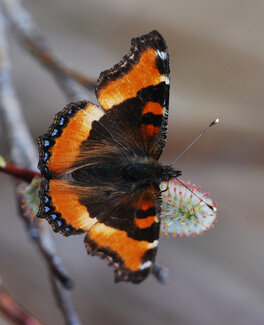Accessibility Options:
Welcome

Welcome to the research guide for Biology! This guide is a great tool for finding information for research, collecting articles for classes, and broadening your knowledge of Biology. Each tab contains current and relevent resources for assisting you in collecting the best information for your project, interest, or research.
Subject Specialist
-

Saily Marrero
Nursing & Health Studies, Biology, and Psychology Librarian
305-284-2040
Please provide a brief description of the topics or issues you would like to discuss during our consultation.
Databases
Biological Science (ProQuest)
This service indexes theoretical and applied research in biomedicine, biotechnology, zoology, ecology, and related resources in the biological sciences. MEDLINE and TOXLINE are included in the search.
ScienceDirect
Science Direct is a full text database offering journals and books from the leading scholarly publisher Elsevier. It has particular strengths in medicine and mathematics, but its nine million articles cover a wide range of scientific topics.
Agricultural & Environmental Science (ProQuest)
A multidisciplinary database that indexes and abstracts the world's research literature in the fields of agricultural and environmental sciences, providing comprehensive coverage from 1967 to the present.
Web of Science
Web of Science, published by Thomson Reuters, is a multi-disciplinary database that provides integrated access to over 8,000 key research journals indexed in: Science Citation Index Expanded, Social Science Citation Index, and Arts and Humanities Citation Index.
Ecology Abstracts
Ecologists will find in this database the essence of current ecology research across a wide range of disciplines, reflecting recent advances in light of growing evidence regarding global environmental change and destruction. Ecology Abstracts focuses on how organisms of all kinds - microbes, plants, and animals - interact with their environments and with other organisms. Included are relevant papers on evolutionary biology, economics, and systems analysis as they relate to ecosystems or the environment.
Index to National Agricultural Library's international journals, theses, patents, computer software, and technical reports in agriculture and related fields. This database includes but is not limited to resources available in the NAL, and contains 5,200,000+ records including printed works dating back to the 15th century.
eLS
Electronic version of the 20-volume print resource. eLS (formerly known as the Encyclopedia of Life Sciences) is a monthly-updating reference work containing over 5,000 specially commissioned, peer-reviewed and citable articles written by leaders in the field. It offers comprehensive and authoritative coverage of the life sciences for students, lecturers and researchers alike.
BioOne
Provides access to full-text of research journals in the biosciences published by scientific societies such as the Wilson Ornithological Society, Society of Wetland Scientists, and Entomological Society of America.
Web of Science Guides
Difference in Databases
Reference & Encyclopedias
Animal Behavior Abstracts
Indexes and abstracts significant papers relevant to animal behavior ranging from neurophysiology to behavioral ecology, genetics, applied ethology, etc.
Encyclopedia of Biological Chemistry
Online version of Encyclopedia of Biological Chemistry, Volumes 1-4. Written for a broad, cross-disciplinary audience, the Encyclopedia of Biological Chemistry addresses the fundamental discipline of biological chemistry underlying virtually all of the life sciences. This compilation of more than 500 different entries encompasses all aspects of biochemistry, as well as the extensions of this subject into the related fields of molecular biology, cell biology, genetics and biophysics.
Encyclopedia of Life
Open access global effort to document all 1.8 million named species of animals, plants, and other forms of life.
Evolution of Nervous Systems
Outlines changes in brain and nervous system organization occurring from first vertebrates to present day fishes, reptiles, birds, mammals, and especially primates, including humans.
Scitable
Open access science library and personal learning tool from Nature Publishing. Concentrates on genetics, evolution, variation. Option for faculty to create classroom learning group. Well suited for undergraduate students.
Genetics Reference
Student and consumer-friendly information about the effects of genetic variations on human health. Includes basic information about chromosomes, DNA, genes, etc.
Tree of Life
Collaboration between biologists and nature enthusiasts worldwide. Project provides information about biodiversity, the characteristics of different groups of organisms, and their evolutionary history. Pages are linked hierarchically in the form of the evolutionary tree of life.
Aglais milberti

Literature Reviews
A literature review can serve at least two purposes:
1) act as part of the introduction to a research paper and
2) be an end in itself.
What it is and what it is not:
-
A literature review is a focused synopsis of the current state of research that pertains to your particular research question or project. It also functions to put your research into a wider context of your research area and to explain the reasons why you are pursuin the question or thesis.
-
Very importantly, it is NOT merely a descriptive summary of the research that went before yours, but a critical analysis or evaluation of that information, e.g., quality, validity of results, methology, etc.
-
It should also knit together various research efforts to demonstrate how they relate to each other and to your project.
-
To avoid bias, steer away from selectively choosing research for a literature review that will only support your own thesis; instead include all that is pertinent to it and reflects differing views and findings. Your credibility will also be questioned if you promote or show disfavor toward a study or author. A literature review is an objective exercise.
- Ensure that sources of the information reviewed are authoritative - that is, find out the credentials of authors and publications. Your librarian is happy to help you learn how to achieve this important goal.
Writing Center
The Writing Center can assist students with various writing projects, click on the link for more information or to schedule an appointment with them.
Resources for Literature Reviews
These resources are just a few examples that explain how to tackle the job of writing a Literature Review.
Interesting Websites
BugGuide
Great photography. Informative text about insects, spiders, and "other related creatures". Site featured in WebWatch column of BioTechniques 47:5, 2009. Hosted by Iowa State University Department of Entomology.
DIVEIN
Performs automated maximum likelihood phylogenetic analyses of nucleotide and amino acid sequences. See Deng W, Maust BS, Nickle DC, Learn GH, Liu Y, Heath L, Kosakovsky Pond SL, Mullins JI 2010 DIVEIN: a web server to analyze phylogenies, sequence divergence, diversity, and informative sites.
GEISHA (Gallus Expression In Situ Hybridization Analysis)
Gene expression profiles in chick embryos during first 6 days post-fertilization. Fantastic images.
Nikons Small World Images
"Nikon’s Small World is regarded as the leading forum for showcasing the beauty and complexity of life as seen through the light microscope. The Photomicrography Competition is open to anyone with an interest in microscopy and photography. The video competition, entitled Small World In Motion encompasses any movie or digital time-lapse photography taken through the microscope."
Olympus BioScapes International Digital Imaging Competition
Honors the world's most extraordinary microscope images of life science subjects.
Science Commons
Three interlocking initiatives designed to accelerate the research cycle: making scientific research, enabling access to research materials, and integrating fragmented information sources. University of Miami faculty are encouraged to contribute to Science Commons.
Swingle Plant Anatomy Reference Collection
This digital archive shows a selection of slides from the Swingle Reference Collection of 3,200 specimens on over 26,000 glass microscope slides, from 575 plant species. Majority of specimens collected in the early 20th century.
A Spider on its Web
